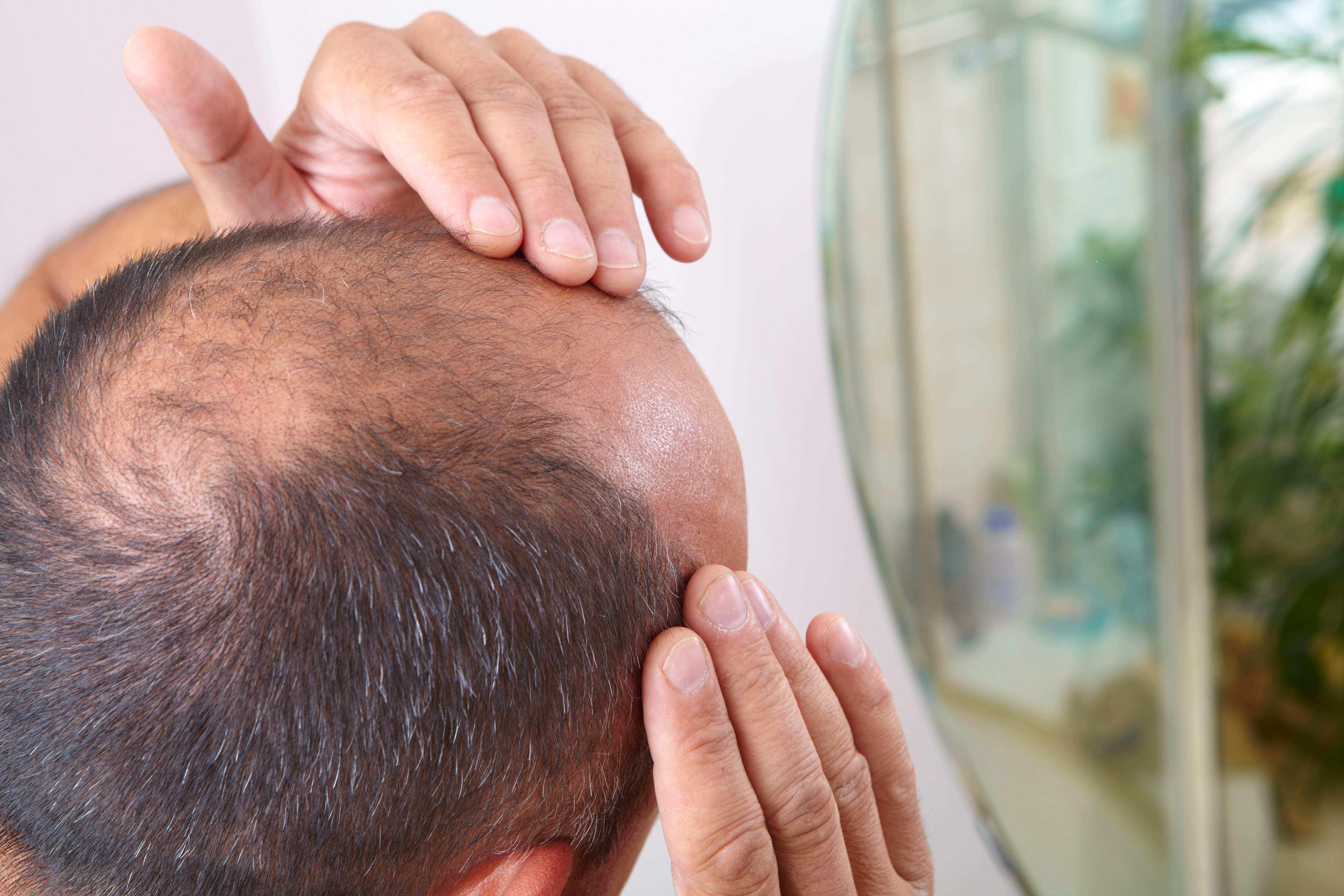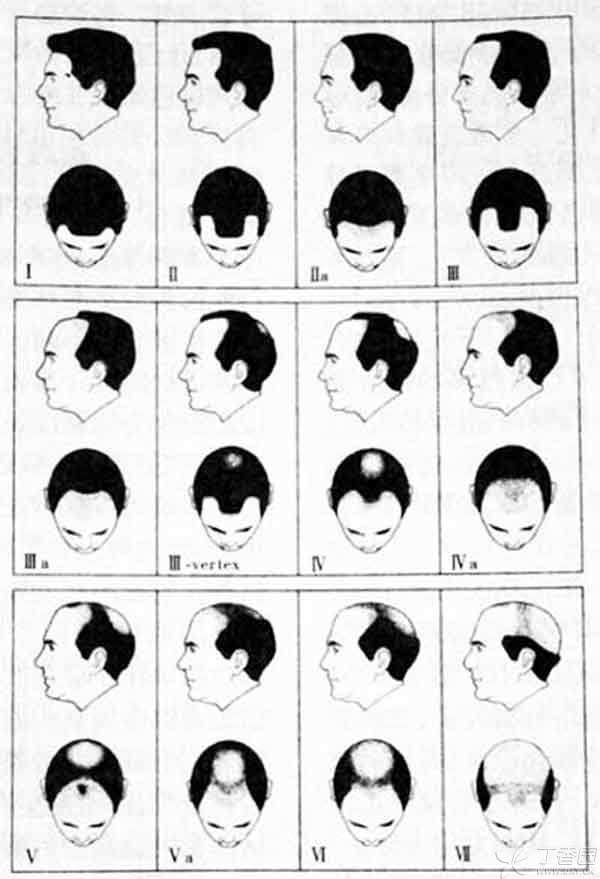
Today we will talk about [masculinity].
The former [girl idol], Prince William, not only inherited his handsome appearance from his mother, but also suffered from hair loss from his father’s line [ancestral]. Compared with Prince Harry, who is not a few years away from him, the difference in hair volume is not only a little.
In addition to the prince, I have a male friend who has an ancestral Mediterranean alopecia and was often called “good teacher” by junior students in high school. He has also become accustomed to this scene and always nods with poise: “Hmm”.
But as a warm-blooded man, his man show’s heart, which can be calm. So he still keeps reprinting on the circle of friends:
A man with alopecia is a sign of great intelligence.
Men with alopecia are more passionate and mobile, so most successful people in society are bald.
Androgen in alopecia men is higher than that in ordinary people, which is exactly the performance of real men.
… …
People with alopecia are more masculine?
We usually think that men have more androgens, so they are physically strong, have low voices and have more vigorous hair, while women have the opposite.
In fact, Because he is too manly, There is a type of alopecia, called male alopecia, also known as androgen-derived alopecia. This kind of alopecia is also like a forest of hair, revealing a vast sea. Therefore, people also vividly describe this kind of alopecia as [Mediterranean alopecia]. This kind of friend’s hair is usually sparse and soft. Well, it doesn’t look very man.
As a dermatologist, I just got to this point and it has produced amazing results. My male friend jumped up and spread it to other friends with his glass, so that I didn’t have a chance to explain the truth to him.
The truth is hormones?
Androgen-derived alopecia is indeed caused by androgen.
The androgen in serum is mainly testosterone, and free testosterone can be converted into dihydrotestosterone with stronger activity by 5-reductase.
Excessive dihydrotestosterone will shorten the growth period of hair and shrink hair follicles. As a result, black, thick and bright hair will gradually not grow, but only soft and slender hair will grow. After years of development, hair follicles will completely shrink, and nothing will grow and there will be no medicine to save.
This is like the boss has been urging employees to work overtime, which makes people depressed, more and more collapsed, and the production efficiency is low until the strike or even jumping off a building.
But men with androgenic alopecia, The level of serum testosterone is probably not much higher than that of ordinary people. Some people once took blood tests from nearly 1,000 patients with androgenic alopecia who came to seek medical treatment in 6 years. Before treatment intervention, nearly 80% of the patients’ serum testosterone level was not higher than the normal range, and their overall average was not beyond the normal range. [1]
So in fact, the amount of androgen produced by most alopecia patients is quite normal.

Why is there only bald head?
Compared with ordinary people, there is no particularly high yield, the difference is that the scalp of alopecia is different, and the scalp of alopecia contains more 5-reductase.
This enzyme focuses on converting testosterone into dihydrotestosterone with higher activity locally, thus overburdening local hair follicles.
In contrast, occipital hair follicles are rarely affected by this.
It is for this reason that the alopecia you see always occurs on the top of the head, forming one [Mediterranean] after another.
We have graded the severity of [Mediterranean], I is the lightest and VII is the heaviest, so you can see that the most serious situation will be that only the occipital part has hair:
 Ⅶ
Ⅶ
Figure: Disease Classification Diagram of Male Androgenic Alopecia (Hamilton) [2]
Well, now you can judge Prince William’s alopecia. What is the approximate level?
[Mediterranean] What else can I do?
In the past ten years or so, many people have tried various treatment methods clinically.
1. Surgery
For example, small skin grafts with hair follicles are taken from the superior scalp such as occipital and temporal sides, and the effect is quite good when skin grafting is carried out to the advantage of hairless occurrence on the top of the head. Many hospitals that carry out this technology said that they will pay a return visit within one year, and nearly 89% of the hair in the skin grafting area is still alive.
However, many people also said that when they saw blood during the operation, their scalp felt pins and needles and they were too aggressive. Is there any what drug treatment?
Step 2: Oral medication
There are also drugs.
Finasteride, which has been widely used clinically in recent years, It can inhibit the activity of 5-reductase and block the conversion of testosterone to dihydrotestosterone, thus reducing the burden on hair follicles. The drug reduces dihydrotestosterone instead of testosterone, so serum testosterone will not drop accordingly. Adhering to the dosage on time will not lose the secondary sexual characteristics. After taking it for half a year, the effective rate can reach 66%, and after one and a half years of treatment, the effective rate can reach 95%. [3]
3. Topical drug
If oral medicine still worries you, there is still a lucky general named [minoxidil] in terms of external medicine.
Local expansion of capillaries during external application can make hair obtain more nutrients, thus delaying alopecia and promoting new occurrence and growth. The effective rate for external application is 58.3% for 4 months and 72.2% for 12 months.
However, it has a side effect that makes people laugh and cry, that is, it may also cause the hair of other parts that are not medicated to turn black and thicker. Male patients are nothing. If female patients have not completely covered their scalp and their hands and feet are already black and bright, they will be living as a female man.
Oral medicine and external medicine have the same restrictions, One is that the new hair will still fall off after the drug is stopped, The second is to use it for mild and early patients, and the curative effect is good. Severe patients, or patients over 10 years old, have a considerable number of hair follicles that have completely shrunk. Even if the hormones that force them are removed and nutrition is provided to them, it is difficult for them to grow hair again. At this time, only surgery can make the patients become a quiet handsome man again.
